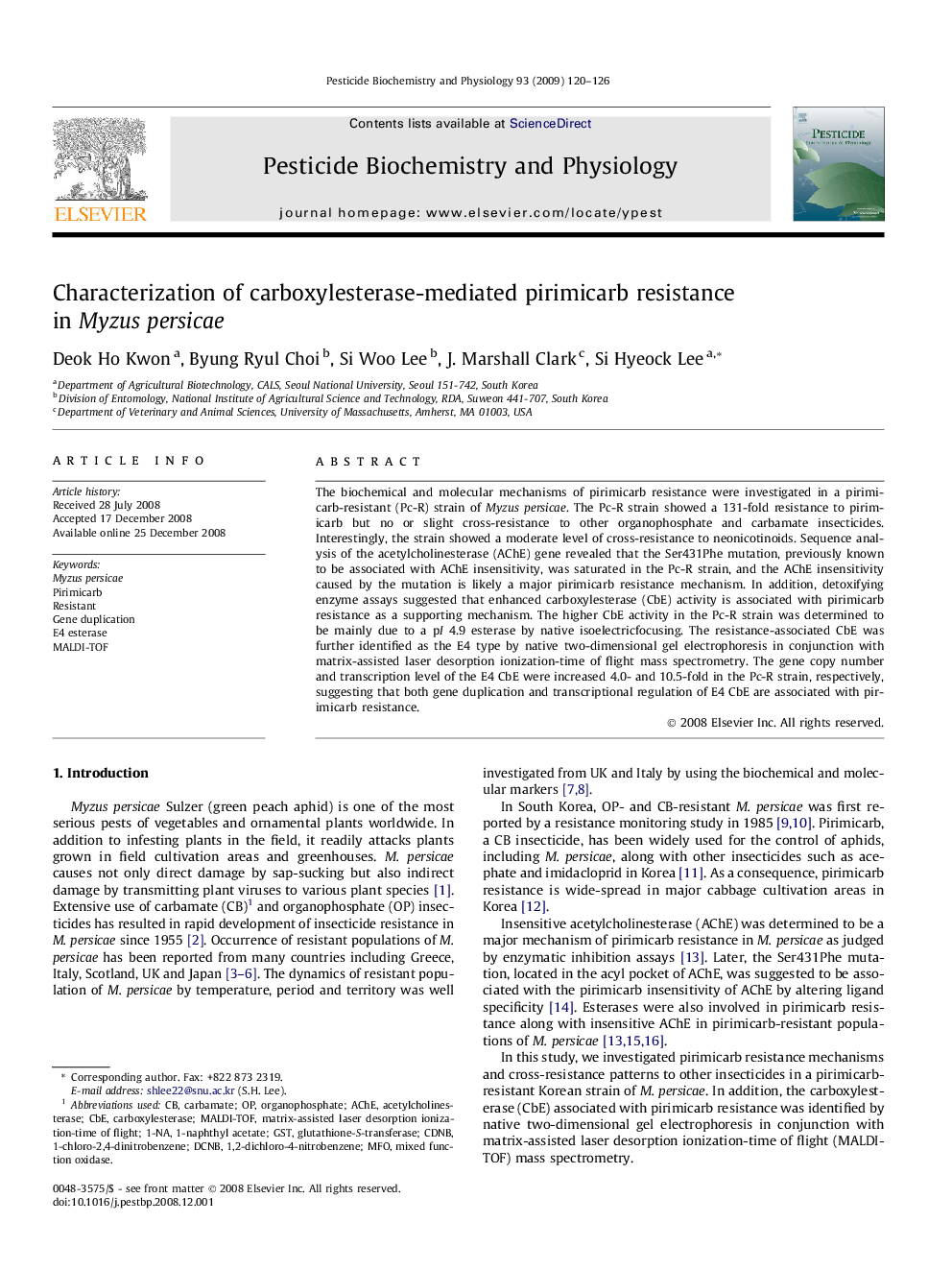| Article ID | Journal | Published Year | Pages | File Type |
|---|---|---|---|---|
| 2009873 | Pesticide Biochemistry and Physiology | 2009 | 7 Pages |
The biochemical and molecular mechanisms of pirimicarb resistance were investigated in a pirimicarb-resistant (Pc-R) strain of Myzus persicae. The Pc-R strain showed a 131-fold resistance to pirimicarb but no or slight cross-resistance to other organophosphate and carbamate insecticides. Interestingly, the strain showed a moderate level of cross-resistance to neonicotinoids. Sequence analysis of the acetylcholinesterase (AChE) gene revealed that the Ser431Phe mutation, previously known to be associated with AChE insensitivity, was saturated in the Pc-R strain, and the AChE insensitivity caused by the mutation is likely a major pirimicarb resistance mechanism. In addition, detoxifying enzyme assays suggested that enhanced carboxylesterase (CbE) activity is associated with pirimicarb resistance as a supporting mechanism. The higher CbE activity in the Pc-R strain was determined to be mainly due to a pI 4.9 esterase by native isoelectricfocusing. The resistance-associated CbE was further identified as the E4 type by native two-dimensional gel electrophoresis in conjunction with matrix-assisted laser desorption ionization-time of flight mass spectrometry. The gene copy number and transcription level of the E4 CbE were increased 4.0- and 10.5-fold in the Pc-R strain, respectively, suggesting that both gene duplication and transcriptional regulation of E4 CbE are associated with pirimicarb resistance.
